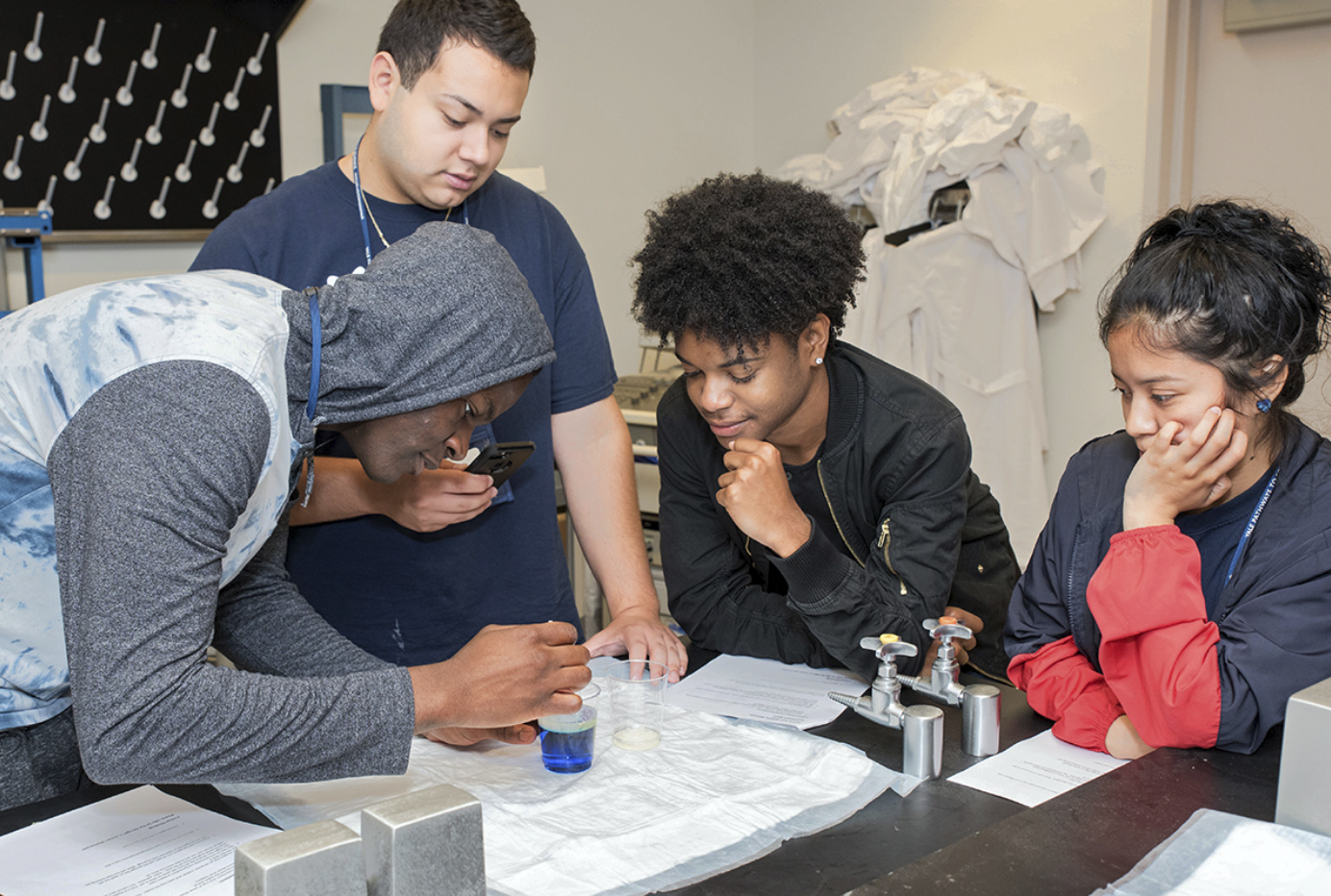
YaleNews
This year marks the fifth anniversary of Yale’s Pathways to Science, free on-campus STEM enrichment programming for local middle and high school students hosted by Yale faculty members.
Pathways was officially established in 2012 by Claudia Merson, director of public school partnerships for the Yale Office of New Haven and State Affairs. Merson, after having worked internationally for over two decades, first came to the University in 1995 to work on a partnership between the Yale School of Medicine and Hill Regional Career High School, a public magnet school in New Haven.
According to Merson, when she first started at Yale, there were already established science outreach programs, but there lacked a “coordinated infrastructure for STEM outreach” on campus.
“When we were beginning to form Pathways, it was like a thousand flowers, but no garden,” Merson said.
Merson explained how in 2002, dialogue first began about creating infrastructure to bring together all the STEM outreach programs on campus. She noted that at the same time as Yale faculty members were expressing increased interest in outreach, superintendents from local school districts also became engaged. Today, according to Merson, the Pathways program has grown to 1,200 students — a number that will grow to about 1,400 after the next cohort officially joins on Sept. 24.
Pathways programming includes one-time lectures open to the public, half-day workshops for local middle and high school students, internship programs and a summer enrichment program.
“Pathways creates a target group of students that we very mindfully come to know and the beginning of it is the opportunity for exposure in a variety of different [STEM] areas,” Merson said.
According to Maria Parente GRD ’07, Yale’s coordinator of community programs in science, faculty members may offer STEM outreach programs as part of the “broader impacts” criterion of National Science Foundation grants. According to the NSF Grant Proposal Guide, the broader impacts criterion ensures that the activity or research at hand reaches beyond academia through engagement with the community, increased participation of underrepresented groups and enhanced societal scientific and technological understanding.
Parente, who joined Pathways full time in 2012, said she estimates that the program has helped more than 130 broader impacts components of grant proposals in the last five years. She noted that for faculty members, Pathways provides the infrastructure for their outreach efforts, and that Pathways experiences are intended to be cumulative, as there is always “somewhere else they can go” after one program.
“Faculty are using their own superpowers and giving their own gifts,” Parente said. “Rather than faculty members having to worry about the logistical pieces, like how to get an audience or paperwork for minors, they concentrate on content, and how to best relate the material.”
Parente, who has tracked student participation in the program since 2012, noted that 45 percent of Pathways students are the first in their family to go to college, and 63 percent of students are eligible for free or reduced-price lunch, which is used as a proxy for socioeconomic status in education research. Additionally, 28 percent are African-American, 24 percent are Hispanic, 14 percent are Asian and 34 percent are white.
Parente noted that for the most part, student demographics have remained fairly consistent and are representative of the middle and high school populations in the New Haven, West Haven and Amity public schools — the districts from which students are recruited.
“Having Pathways to Science at Yale means that we are supporting the STEM outreach programs across the University and we have some hope of sustained communication with each other,” physics professor Sarah Demers said. “This is crucial when faculty have a new idea they want to implement without reinventing the wheel, or they want to reach out to the community in a way that is effective, but that doesn’t require an unsustainable amount of time or energy.”
Demers said her involvement with Pathways began when she was co-directing the Girls’ Science Investigations program in the Physics Department. After joining the Pathways program, the GSI team was able to access more complete lists of local students, becoming part of a longitudinal study to evaluate the effectiveness of the program over longer timescales.
Moving forward, the Pathways program is expanding into other disciplines, with the Pathways for Arts and Humanities program welcoming its first cohort this year.
Kevin Lin | kevin.lin@yale.edu







